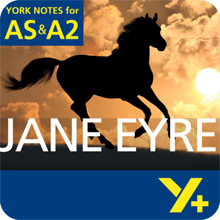Your Assessment
Read through the answer below and decide what grade to give it. Use the Hints & Tips to help you make your assessment.
Structurally, "Jane Eyre" is a novel of development – a Bildungsroman – where a person’s life is depicted from childhood until possibly old age, and might be seen as very much in the Romantic tradition, reflected in such works as the novels of Goethe or the poetry of Byron. These works focus on the Romantic 'quest' to find fulfilment, in the sense of the Northrop Frye definition, and Jane Eyre herself could be seen as a 'pilgrim' character, who has no family and who has to battle temptation (in the form of Rochester), and undergo pain and withdrawal (most noticeably Jane's time in the wilderness) before finally achieving fulfilment. To have a woman undertake this Romantic vision was revolutionary and typical of the Brontës' 'wild imagination[s]', and can also be seen in "The Tenant of Wildfell Hall" and "Villette", for example.
However, this Romantic structure is underpinned by a Gothic sensibility so strong at times that the book could equally be seen to have as much in common with texts such as "Frankenstein" and "The Monk" as the Romantic works previously mentioned. For example, when Jane encounters Bertha Mason she hears; 'a demonaic laugh – low, suppressed, and deep – … and I thought at first the goblin-laughter stood at my bedside'. The Gothic movement dealt with the unnatural and hidden, and it is significant that Bertha's laughter itself is 'suppressed' as a kind of synecdoche for the terrible secret she represents. Bertha is also aligned here with the devil, and elements of the supernatural pervade "Jane Eyre" elsewhere: Rochester repeatedly refers to Jane as a 'fairy' (which was a much more sinister term than its current meaning implies) as part of the language of courtship, and after her unfortunate first meeting with Rochester as he falls from his horse (even his dog, Pilot, makes Jane think she has seen the mythical dog the 'Gytrash'), Rochester tells her that he 'thought unaccountably of fairy tales' on seeing her.
Architecture and landscape are both essential features of the Gothic and the Romantic and are here drawn together. Thornfield Hall has the Gothic features of winding staircases, inaccessible attics and endless corridors and battlements, which in the Gothic stand for personal secrets, but also hidden sexuality and madness, as personified by Bertha. Thornfield at night is a place of Gothic transgression, where the moon casts a 'hoary gleam' over it – 'hoary' meaning both ancient and silvery, personifying the night time. The Gothic red-room at Lowood is equally disturbing; its womb-like qualities moving some feminist readings to see it as a representation of Jane's movement into puberty and menstrual blood. Brontë, like Dickens, draws on the Gothic to challenge Victorian social values (corporal punishment and institutional cruelty) but Brontë, however, by casting Jane onto the moors after her discovery of Rochester's marriage to Bertha, depicts a Romantic vision of landscape, where the plants and the trees sustain Jane. As she undergoes her traumatic separation from Rochester she hopes that her body will now 'decay quietly, and mingle in peace with the soil of this wilderness'. This echoes the Romantic ideal of the sublime, with the terror and fascination of the wild intermingled as one.
The Gothic and the Romantic once more entwine at the novel's conclusion, with the blinded Rochester helplessly appealing to the now empowered Jane, but this also serves to remind the reader that "Jane Eyre" is not just a novel of traditional literary forms, but also a novel that challenges Victorian assumptions about class and gender, particularly in its depiction of a woman struggling to find both personal and economic independence.
